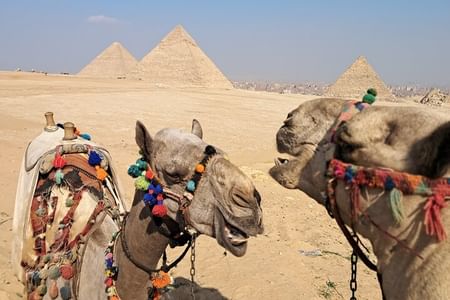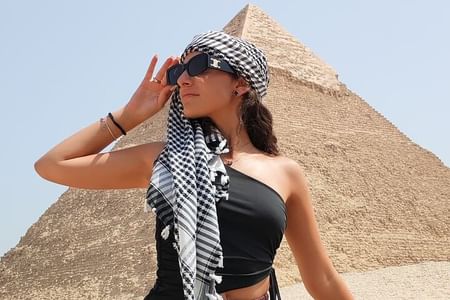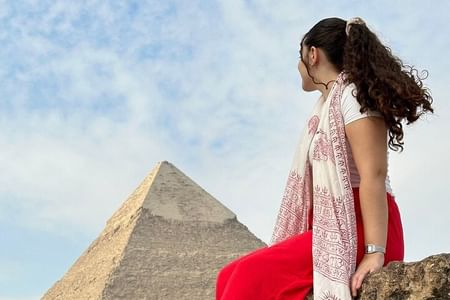Are you interested in the history of Egypt?
Do you want to visit the amazing monuments in Luxor and learn more about Egyptian mythology?
Luxor Tour allows you to dive deep into the world of the pharaohs. Program: The Karnak Temple, the largest sacred building of Amun-Re The Colossi of Memnon The Terrace Temple of Hatshepsut The Valley of the Kings
From Marsa Alam: Small Group Day Trip to Luxor
About This Tour
Inclusions
- Lunch
- All Fees and Taxes
- The tickets of all above mentioned sites
- Professional licensed Egyptologist
- Air-conditioned vehicle
Exclusions
- Drinks in the Restaurant
Tour Plan
Itinerary
Your adventure begins with an early morning pickup from your hotel in Marsa Alam, traveling in a comfortable, air-conditioned vehicle toward the historic city of Luxor. During the scenic drive, your Egyptologist guide will share insights about the landscapes and history that make this journey unique.
The Valley of the Kings in Egypt is the place where most of the pharaohs of the New Kingdom were buried, that is, from that time when ancient Egypt was an empire that extended along the eastern coast of the Mediterranean (the 18th, 19th, and 20th dynasties). It was there that they were buried, for example, Thutmose II, Tutankhamun, and Ramses. The tombs evidence elaborate preparations for the next world, in which humans were promised continuing life and pharaohs were expected to become one with the gods. Mummification was used to preserve the body so that the deceased's eternal soul would be able to reanimate it in the afterlife.
Hatshepsut's temple is one of the world’s most striking architectural masterpieces. The terrace Temple in the West Bank of luxor were built by the Queen Hatshepsuit . Hatshepsut (c.1473–1458 BC), the queen who became Pharaoh, built a magnificent temple at Deir al-Bahari, on the west back of Luxor. It lies directly across the Nile from Karnak Temple, the main sanctuary of the god Amun. Hatshepsut’s temple, Djoser-desert “the Holy of Holies” was designed by the chief steward of Amun, Senenmut. she was very beloved pharaoh from the people at this time .
Colossi of Memnon Two giant statues of pharaoh Amenhotep III, built in the 14th century BC. Colossi of Memnon are two massive stone statues that actually depict Pharaoh Amenhotep III, not Memnon. For the past 3400 years, they have stood in the necropolis of Thebes, on the other side of the Nile River from the modern city of Luxor. Two statues depict the seated Amenhotep III (c. XIV century BC). His hands are on his knees, and his gaze is directed east to the river and the rising sun.
Afterward, enjoy a delicious lunch at a local restaurant in Luxor before crossing the Nile to the East Bank
Karnak Temple Complex,the most important antiquities of the ancient Egyptian Civilization Karnak Temple is the largest temple complex of Ancient Egypt, the main state sanctuary of the New Kingdom. The ensemble includes temples dedicated to the Theban triad - the supreme god Amon-Ra, his wife Mut and son Khons. Located on the territory of ancient Thebes in modern Karnak - a small village lying on the eastern bank of the Nile, 2.5 km from Luxor. The Karnak Temple Complex, commonly known as Karnak, comprises a vast mix of decayed temples, chapels, and pylons.
As the day comes to a close, relax on the return drive to Marsa Alam, reflecting on the extraordinary monuments and ancient wonders you have experienced.
Meeting / Pickup
Know Before You Go
- Stroller / pram accessible
- Public transportation nearby
- Infants must sit on your lap
Please Note
- Not wheelchair accessible
- Not suitable for pets
- Infant seats unavailable
- We will pick you up at the hotel lobby. The driver will wait for you with a signboard with the lead travel name.
Reviews
Save 11%
🎁 First Time Booking-
Limited Time Offer: All Dates, All Destinations












